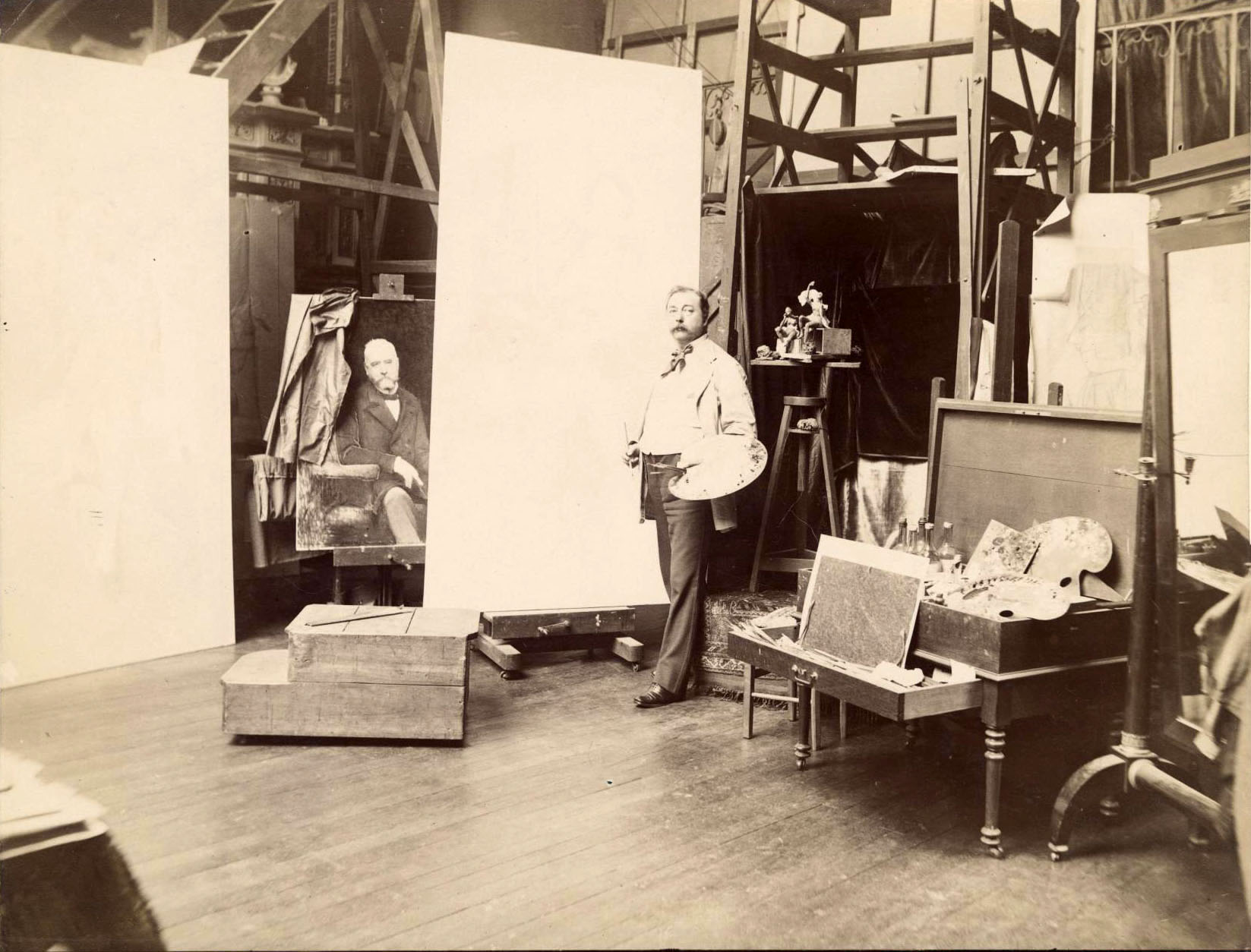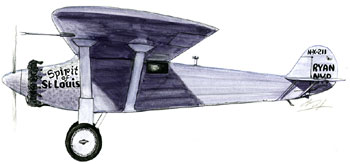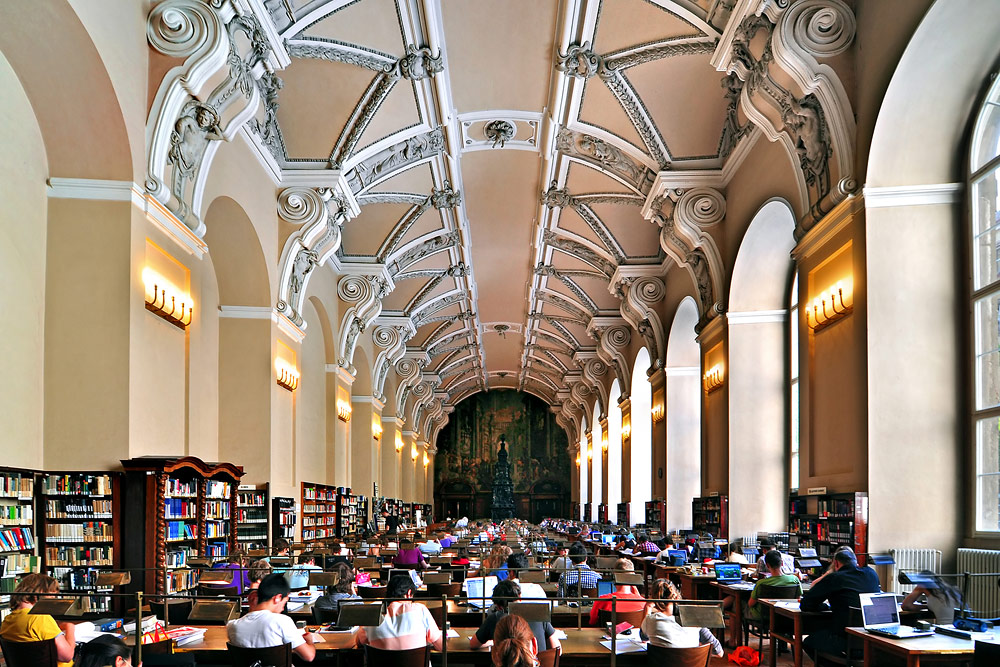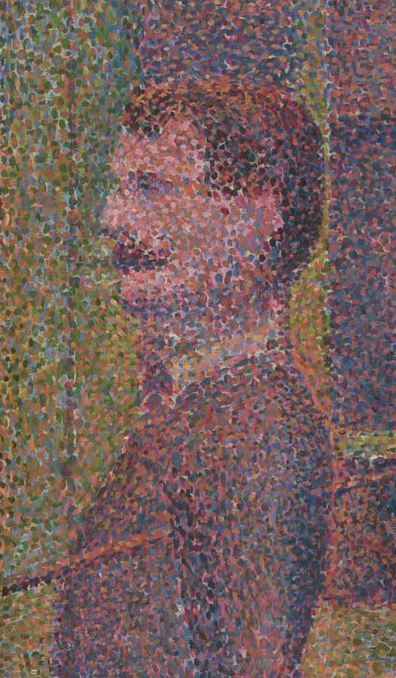|
Karel Vítězslav Mašek
Karel Vítězslav Mašek (1 September 1865, Prague - 24 July 1927, Prague) was a Czech painter, architect, illustrator and art professor. Life He studied briefly at the Academy of Fine Arts, Prague with Antonín Lhota then, in 1884, transferred to the Academy of Fine Arts, Munich where he was a member of "Škréta" (Orcs), a Czech young artists' association, and studied with Alexander von Wagner. In 1887, he accompanied Alfons Mucha and František Dvořák to Paris, studying at the Académie Julian with Gustave Boulanger and Jules Lefebvre. It was there that he became acquainted with pointillism. he returned to Prague in 1888 and two years later joined the "", or "Kunstverein für Böhmen" (Fine Arts Unit), an association which included many members of the Czech nobility who were devoted to the promotion of art. From 1898, he was a professor at the Academy of Arts, Architecture and Design in Prague. Josef Čapek is, perhaps, his best-known student. He was also interested ... [...More Info...] [...Related Items...] OR: [Wikipedia] [Google] [Baidu] |
Karel Vitezslav Masek 1903
Karel may refer to: People * Karel (given name) * Karel (surname) * Charles Karel Bouley (born 1962), American talk radio personality known on air as Karel * Christiaan Karel Appel (1921–2006), Dutch painter and sculptor Business * Karel Electronics, a Turkish electronics manufacturer * Grand Hotel Karel V, Dutch Hotel *Restaurant Karel 5, Dutch restaurant Other * 1682 Karel, an asteroid * Karel (programming language), an educational programming language See also * Karelians or Karels, a Baltic-Finnic ethnic group *''Karel and I'', 1942 Czech film *Karey (other) Karey may refer to: People * Karey Dornetto (fl. 2002–present), American screenwriter * Karey Hanks (fl. 2016–2018), American politician * Karey Kirkpatrick (fl. 1996–present), American screenwriter * Karey Lee Woolsey (born 1976), Americ ... {{disambiguation ja:カール (人名) ... [...More Info...] [...Related Items...] OR: [Wikipedia] [Google] [Baidu] |
Jules Lefebvre
Jules Joseph Lefebvre (; 14 March 183624 February 1911) was a French Painting, painter, educator and theorist. Early life Lefebvre was born in Tournan-en-Brie, Seine-et-Marne, on 14 March 1836. He entered the École nationale supérieure des Beaux-Arts in 1852 and was a pupil of Léon Cogniet. Career He won the prestigious Prix de Rome with his ''The Death of Priam (Lefebvre), The Death of Priam'' in 1861. Between 1855 and 1898, he exhibited 72 portraits in the Salon (Paris), Paris Salon. Many of his paintings are single figures of beautiful women. Among the portraits of his considered the best were those of M. L. Reynaud and the Napoléon, Prince Imperial, Prince Imperial (1874). In 1891, he became a member of the French Académie des Beaux-Arts. He was professor at the Académie Julian in Paris. Lefebvre is chiefly important as an excellent and sympathetic teacher who numbered many Americans among his 1500 or more pupils. Among his famous students were Fernand Khnopff, Ken ... [...More Info...] [...Related Items...] OR: [Wikipedia] [Google] [Baidu] |
Art Nouveau Painters
Art is a diverse range of cultural activity centered around ''works'' utilizing creative or imaginative talents, which are expected to evoke a worthwhile experience, generally through an expression of emotional power, conceptual ideas, technical proficiency, or beauty. There is no generally agreed definition of what constitutes ''art'', and its interpretation has varied greatly throughout history and across cultures. In the Western tradition, the three classical branches of visual art are painting, sculpture, and architecture. Theatre, dance, and other performing arts, as well as literature, music, film and other media such as interactive media, are included in a broader definition of "the arts". Until the 17th century, ''art'' referred to any skill or mastery and was not differentiated from crafts or sciences. In modern usage after the 17th century, where aesthetic considerations are paramount, the fine arts are separated and distinguished from acquired skills in general, ... [...More Info...] [...Related Items...] OR: [Wikipedia] [Google] [Baidu] |
1865 Births
Events January * January 4 – The New York Stock Exchange opens its first permanent headquarters at 10-12 Broad near Wall Street, in New York City. * January 13 – American Civil War: Second Battle of Fort Fisher – Union forces launch a major amphibious assault against the last seaport held by the Confederates, Fort Fisher, North Carolina. * January 15 – American Civil War: Union forces capture Fort Fisher. * January 31 ** The Thirteenth Amendment to the United States Constitution (conditional prohibition of slavery and involuntary servitude) passes narrowly, in the House of Representatives. ** American Civil War: Confederate General Robert E. Lee becomes general-in-chief. February * February 3 – American Civil War: Hampton Roads Conference: Union and Confederate leaders discuss peace terms. * February 6 – The municipal administration of Finland is established. * February 8 & March 8 – Gregor Mendel reads his paper on '' E ... [...More Info...] [...Related Items...] OR: [Wikipedia] [Google] [Baidu] |
1927 Deaths
Events January * January 1 – The British Broadcasting ''Company'' becomes the BBC, British Broadcasting ''Corporation'', when its Royal Charter of incorporation takes effect. John Reith, 1st Baron Reith, John Reith becomes the first Director-General. * January 7 ** The first transatlantic telephone call is made ''via radio'' from New York City, United States, to London, United Kingdom. ** The Harlem Globetrotters exhibition basketball team play their first ever road game in Hinckley, Illinois. * January 9 – The Laurier Palace Theatre fire at a movie theatre in Montreal, Quebec, Canada, kills 78 children. * January 10 – Fritz Lang's futuristic film ''Metropolis (1927 film), Metropolis'' is released in Germany. * January 11 – Louis B. Mayer, head of film studio Metro-Goldwyn-Mayer (MGM), announces the creation of the Academy of Motion Picture Arts and Sciences, at a banquet in Los Angeles, California. * January 24 – U.S. Marines United States occ ... [...More Info...] [...Related Items...] OR: [Wikipedia] [Google] [Baidu] |
Czech Male Painters
Czech may refer to: * Anything from or related to the Czech Republic, a country in Europe ** Czech language ** Czechs, the people of the area ** Czech culture ** Czech cuisine * One of three mythical brothers, Lech, Czech, and Rus *Czech (surname) *Czech, Łódź Voivodeship, Poland *Czechville, Wisconsin, unincorporated community, United States See also * Čech, a surname * Czech lands * Czechoslovakia * List of Czechs * * * Check (other) * Czechoslovak (other) * Czech Republic (other) The Czech Republic The Czech Republic, also known as Czechia, and historically known as Bohemia, is a landlocked country in Central Europe. The country is bordered by Austria to the south, Germany to the west, Poland to the northeast, and ... * Czechia (other) {{disambiguation Language and nationality disambiguation pages ... [...More Info...] [...Related Items...] OR: [Wikipedia] [Google] [Baidu] |
Czech Painters
Czech may refer to: * Anything from or related to the Czech Republic, a country in Europe ** Czech language ** Czechs, the people of the area ** Czech culture ** Czech cuisine * One of three mythical brothers, Lech, Czech, and Rus *Czech (surname) *Czech, Łódź Voivodeship, Poland *Czechville, Wisconsin, unincorporated community, United States See also * Čech, a surname * Czech lands * Czechoslovakia * List of Czechs * * * Check (other) * Czechoslovak (other) * Czech Republic (other) The Czech Republic The Czech Republic, also known as Czechia, and historically known as Bohemia, is a landlocked country in Central Europe. The country is bordered by Austria to the south, Germany to the west, Poland to the northeast, and ... * Czechia (other) {{disambiguation Language and nationality disambiguation pages ... [...More Info...] [...Related Items...] OR: [Wikipedia] [Google] [Baidu] |
National Library Of The Czech Republic
The National Library of the Czech Republic () is the central library of the Czech Republic. It is directed by the Ministry of Culture (Czech Republic), Ministry of Culture. The library's main building is located in the historical Clementinum building in the centre of Prague, where approximately half of its books are kept. The other half of the collection is stored in the district of Hostivař. The National Library is the biggest library in the Czech Republic, housing around 6 million documents. The library currently has 20 627 registered readers. Although comprising mostly Czech texts, the library also stores older material from Turkey, Iran and India. The library also houses books for Charles University in Prague. History In the 13th century, the ''Studium generale'' school was founded in the Dominican Order, Dominican monastery in Prague's Old Town (Prague), Old Town. This school, including its library, merged with the university in the 14th century. In 1556, monks of the Socie ... [...More Info...] [...Related Items...] OR: [Wikipedia] [Google] [Baidu] |
Josef Čapek
Josef Čapek (; 23 March 1887 – April 1945) was a Czech artist who was best known as a painter, but who was also noted as a writer and a poet. He invented the word "robot", which was introduced into literature by his brother, Karel Čapek. Life Čapek was born in Hronov, Bohemia (Austria-Hungary, later Czechoslovakia, now the Czech Republic) in 1887. First a painter of the Cubist school, he later developed his own playful, minimalist style. He collaborated with his brother Karel on a number of plays and short stories; on his own, he wrote the utopian play ''Land of Many Names'' and several novels, as well as critical essays in which he argued for the art of the unconscious, of children, and of 'savages'. He was named by his brother as the true inventor of the term ''robot''. As a cartoonist, he worked for ''Lidové noviny,'' a newspaper based in Prague. His illustrated stories ''Povídání o Pejskovi a Kočičce'' (English translation as ''The Adventures of Puss and Pup'' ... [...More Info...] [...Related Items...] OR: [Wikipedia] [Google] [Baidu] |
Academy Of Arts, Architecture And Design In Prague
The Academy of Arts, Architecture and Design in Prague (AAAD, , abbreviated VŠUP, also known as UMPRUM) is a public university located in Prague, Czech Republic. The university offers the study disciplines of painting, illustration and graphics, fashion design, product design, graphic design, ceramics and porcelain, photography and architecture. Along with other buildings, the academy is part of the city's unique glass art cluster. Establishment The Academy was founded in 1885 as the School of Applied Arts in Prague (UPŠ). At the time of its establishment it was the first and only state art school in Bohemia. Its mission, according to the founding charter, was “to nurture manpower skillful in the arts for the artistic industry and to train educational staff for applied arts teaching and for teaching drawing at secondary schools.” It was divided into a three-year general education school and follow-up three- to five-year vocational and special schools with the disciplines of ... [...More Info...] [...Related Items...] OR: [Wikipedia] [Google] [Baidu] |
Pointillism
Pointillism (, ) is a technique of painting in which small, distinct dots of color are applied in patterns to form an image. Georges Seurat and Paul Signac developed the technique in 1886, branching from Impressionism. The term "Pointillism" was coined by art critics in the late 1880s to ridicule the works of these artists, but is now used without its earlier pejorative connotation. The movement Seurat began with this technique is known as Neo-impressionism. The Divisionists used a similar technique of patterns to form images, though with larger cube-like brushstrokes. Technique The technique relies on the ability of the eye and mind of the viewer to blend the color spots into a fuller range of tones. It is related to Divisionism, a more technical variant of the method. Divisionism is concerned with color theory, whereas pointillism is more focused on the specific style of brushwork used to apply the paint. Pointillism is a technique with few serious practitioners today ... [...More Info...] [...Related Items...] OR: [Wikipedia] [Google] [Baidu] |
Gustave Boulanger
Gustave Clarence Rodolphe Boulanger (25 April 1824 – 22 September 1888) was a French figurative painter and academic artist and teacher known for his Classical and Orientalist subjects. Education and career The Néo-Grecs and the Prix de Rome Boulanger was born in Paris in 1824. He never knew his father, and when his mother's death left him orphaned at the age of fourteen, he became the ward of his uncle, Constant Desbrosses, who in 1840 sent him to study first under the history painter Pierre-Jules Jollivet and then at the atelier of Paul Delaroche, where Boulanger met and befriended his fellow student Jean-Léon Gérôme. Boulanger and Gérome would become leading lights of the Néo-Grec movement in French art, which revisited the fascination of previous generations for the Classical world, but brought to its austere subject matter subversive touches of whimsy, sensuality, and eroticism. "When they appear on the contemporary art scene, the Néo-Grecs will be defended as ... [...More Info...] [...Related Items...] OR: [Wikipedia] [Google] [Baidu] |







